- Home
- Suzanne Selfors
The Griffin's Riddle Page 9
The Griffin's Riddle Read online
Page 9
Griffin
When you take the king of beasts and combine him with the king of birds, you get the most majestic creature of all—the griffin. With the body, tail, and back legs of a lion, and the head, wings, and front legs of an eagle, the griffin is a powerful force on land and in the air. And that is why the griffin has been a symbol of divine power across different cultures.
One of the earliest images of this regal beast was found in the ruins of a famous palace called Knossos, on the Greek island of Crete. There, in the throne room, beautiful murals of griffins can still be seen today. Other ancient civilizations, such as Egypt and Persia, also included griffins in their art and stories. During medieval times, a knight bearing a griffin on his coat of arms was thought to be a courageous and bold leader.
According to legend, a griffin chooses only one mate, and if that mate dies, the griffin lives out the rest of its life alone. This sounds sad, but poets found this very romantic. It was also said that griffins love gold and fiercely guard their treasures. Their claws and feathers were believed to heal certain diseases and conditions, including blindness. Medieval merchants made a lot of money selling goblets made from griffin claws (actually antelope horns) and selling delicious griffin eggs (actually ostrich eggs).
Where did the idea of a half-lion, half-eagle creature come from? One theory is that the creature is based on a dinosaur called protoceratops. If people from ancient times stumbled across the fossilized remains of this dinosaur, they could have easily mistaken the creature for being half bird because it had a very large neck frill and a jaw that was so big it looked like a beak. The body of the protoceratops was the size of a sheep and had four legs. Skeletons of protoceratops have been found in many different places, and this might explain why many different cultures came up with similar stories about a half-beast, half-bird creature.
Today, the griffin’s image is used to promote many products. The car company Saab uses a griffin in its logo, as does the professional hockey team the Grand Rapids Griffins. Many colleges and schools use a griffin, including Trinity College in Oxford, England.
Of course, we can’t always know exactly where an idea comes from. That’s the mystery of storytelling.
STORY IDEAS
Imagine that you are living a very long time ago and that your father is a traveling merchant. You’ve just arrived in a new village, ready to sell your goods. The people are simple and have never traveled beyond their hamlet, so they are amazed by the things you have in your wagon. How do you convince the villagers that the “griffin” eggs are real, even if they look a lot like chicken eggs?
It’s a special day at the palace of the griffin king and queen. Their first baby is being hatched. You’ve been invited to witness and celebrate this event. Describe your experience.
ART IDEA
Can you draw a griffin? Remember that the front is all feathered, with an eagle’s face and bird legs and talons. The back half is furry, with back legs that end in paws and a long lion’s tail. Don’t forget the pair of wings.
CREATURE CONNECTION
Bakeneko
Have you ever noticed that cats are mysterious creatures? Unlike friendly dogs, who beg for affection, like to hang out with their owners, and come when they’re called, cats can be standoffish, often preferring solitude, and are talented at ignoring their owners. There’s a saying that we own dogs, but cats own us.
Long ago in Japan, people also thought that cats were mysterious creatures. They believed that even though a cat might live with people, it still possessed the soul of a wild animal. The legend of the bakeneko was born. This creature might look like an ordinary cat, but it was able to shape-shift into human form, and would act in a mischievous manner. While in cat form, the bakeneko could speak human language and walk on hind legs. But the strangest thing of all—it liked to put a napkin on its head and dance. Super weird, right?
How did this story arise? Well, there are a few theories. In ancient Japan, people used lanterns that were fueled by oil. Mostly, this oil was made from fish. The village cats were like cats all over the world. They craved fish, and so they could often be found licking oil from the lanterns. In order to do this, the cats had to stand up on their hind legs to reach the oil. While licking the oil, the light would shine on their faces, making them look quite wicked. Storytellers are always looking for interesting things to write about—and so, ordinary cats standing on hind legs became magical, transforming cats.
It was also said that a cat could become a bakeneko if its tail grew very long. Because no one wanted to own a wicked shape-shifting cat, it became common practice to cut off the tails of cats. After centuries of this practice, today there is a breed of cat with a very short tail—the Japanese bobtail.
The idea that cats can do weird things was not limited to Japan. In ancient China, it was said that a cat could bewitch humans, especially a whitetailed cat. Thus, white cats were not popular. One of the most powerful cats in mythology is the Egyptian goddess Sekhmet, whose face is that of a lioness.
So remember, your pet kitty might be sleeping peacefully on the couch, but if you suddenly can’t find your dinner napkin, don’t be surprised if your cat is wearing it on its head and dancing around the living room.
STORY IDEAS
What would you do if your cat started talking to you in a human language? Would you freak out? Would you laugh? Does your cat have something important to tell you? Create a story based on this idea.
ART IDEAS
Draw a picture of what you’d look like as a cat. Doesn’t that sound like fun? Are you long-haired or short-haired? Are you orange, striped, black, or white? Do you wear a fancy rhinestone collar, or do you live on your own in the wild?
SCIENCE CONNECTION
All About Feathers
We all know what a feather is, right? Feathers are those things that stick out of a bird. Sometimes they are stuffed into pillows. Sometimes they tickle us and make us sneeze.
But did you know that feathers are amazing feats of engineering? They do much more than make a bird look pretty. They help a bird fly, which is probably their most important function. They provide thermal insulation, which means they keep a bird warm. They also provide waterproofing. Have you ever heard the saying “like water rolling off a duck’s back”? Now you know what that means.
Ever wonder why the female mallard duck is covered in plain brown feathers while the male mallard duck has lots of color? Her feathers help her blend into the surrounding forest while she’s sitting on her nest, taking care of her eggs. Providing camouflage is another function of feathers.
There are different types of feathers. Baby birds are born with downy feathers that fall out and are replaced. Vaned feathers have hollow tubes that grow from the skin. These tubes are called quills, and we sometimes use them for writing. Bristle feathers are found around eyes and beaks.
Feathers have tiny hairs called barbules. These barbules hook together. They allow feathers to be airtight for flying and watertight for floating.
We’ve found many different ways to use feathers. Goose down jackets and comforters keep us warm. Feathered fishing lures help us catch fish. And arrows fly straighter if they’re made with feathers. In India, peacock feathers are used in traditional medicines. Eagle feathers are important to Native Americans. They are symbols of honor and usually given to a tribal member after an act of bravery or a good deed. To be given an eagle feather is especially important because the eagle is considered to be the leader of all birds.
So the next time you take a walk and find a feather lying in the grass, pick it up and give it a careful look. Remember that it not only helps a bird look beautiful, but it also provides flight, insulation, and waterproofing. It’s one of nature’s most amazing creations.
CREATIVITY CONNECTION
Make a Worm Compost Bin
If you live out in the country, or have a big backyard, it’s pretty easy to make a compost pile. But for those of us who live on city lots or i
n apartment buildings, how can we make compost dirt with very little space and just scraps from our kitchen?
First, what is compost? It’s a rich, dark brown dirt that’s left when organic material (leaves, sticks, flowers, etc.) decays. You can speed up this process by having worms do most of the work.
Here’s how to create a worm compost bin.
1. Get a wooden or plastic box with a tight-fitting lid, to keep out pests. Drill holes in the bottom for drainage. Place the bin in a shady part of yard, maybe up on bricks to help with draining.
2. Fill the bin with bedding, such as leaves, sawdust, and/or shredded newspapers. The most important thing is to make sure the bedding is moist, so spray it with a hose or spritz it with a bottle. Throw in a handful of dirt to help the worms digest their food.
3. Add some worms. Make sure you get red worms, not fishing worms such as night crawlers and garden worms. Where can you get these red worms? Well, if your friend has a compost pile already, ask if you can dig some out. Or you can order them like Mrs. Mulberry did.
4. Once the worms are in place, you can start adding your food scraps. Don’t add kitchen scraps that are animal-based, such as meat or dairy, because they take a long time to break down and will attract rats. Also, you will get maggots if you add meat. Yuck! Things you can add include tea bags, coffee grounds, greens, fruits, bread, grains, newspaper, cardboard, and leaves.
5. After you add the scraps, mix them into the bedding. Put moist newspaper over the top to keep out the flies and to keep the soil moist so the worms are happy.
6. As the lovely compost dirt is made, push it to one side of the bin and add food scraps to the other side. Now you can use the dirt whenever you like.
CREATIVITY CONNECTION
Write a Riddle
Riddles are questions that are tricky to answer. They are puzzling on purpose. That is why they are so much fun. For example: What gets wetter and wetter the more it dries? Answer: A towel. Here’s another example: I’m black and white and read all over. What am I? Answer: A newspaper.
If you’d like to create your own riddles, here are some steps that might help.
1. Start with the answer. Make it something that everyone is familiar with. For example, let’s choose cat. Now that you have the answer, begin working on the question.
2. Create a list of words and phrases, everything you can think of that describes your answer. Use a thesaurus to help with some words you might not have thought of.
Furry
Four paws with claws
Whiskers
Purring sounds
Long, swishing tail
3. Now think about your answer in other ways. How does it feel to be the answer? How does it smell or taste? What does it do or want? Think of some phrases that use like or as.
Likes to hunt at night
Wants to eat mice
Wants to sleep in sunbeams
Wants to nap all day
Quiet as the night
Prowls like a shadow
Plays with yarn
Hates water!
Here is a riddle for cat:
OUT OF SIGHT, IN THE NIGHT, WAITING FOR A MOUSE DELIGHT. WHO AM I?
Now you try.
For more great reads and free samplers, visit
LBYRDigitalDeals.com
ALSO BY SUZANNE SELFORS:
The Imaginary Veterinary Series
The Sasquatch Escape
The Lonely Lake Monster
The Rain Dragon Rescue
The Order of the Unicorn
Ever After High
Next Top Villain
General Villainy: A Destiny Do-Over Diary
The Smells Like Dog Series
Smells Like Dog
Smells Like Treasure
Smells Like Pirates
To Catch a Mermaid
Fortune’s Magic Farm
COVER
TITLE PAGE
WELCOME
MAP
DEDICATION
CHAPTER 1: Board Game Day
CHAPTER 2: Worm Trouble
CHAPTER 3: A Dragon Detour
CHAPTER 4: Invaders at the Gate
CHAPTER 5: Victoria the Sneak
CHAPTER 6: Emergency Code Red
CHAPTER 7: Troll Tonsillitis
CHAPTER 8: Trollville
CHAPTER 9: Playing Dress-Up
CHAPTER 10: Goat Man
CHAPTER 11: Cat Man
CHAPTER 12: An Amazing Maze
CHAPTER 13: Satyr Soldiers
CHAPTER 14: Jailbirds
CHAPTER 15: Grumpy Griffin
CHAPTER 16: A Royal Riddle
CHAPTER 17: The Trusted Advisor
CHAPTER 18: The Royal Nest
CHAPTER 19: Mr. Tabby Again
CHAPTER 20: Special Soup
PUT YOUR IMAGINATION TO THE TEST
CREATURE CONNECTION: Griffin
CREATURE CONNECTION: Bakeneko
SCIENCE CONNECTION: All About Feathers
CREATIVITY CONNECTION: Make a Worm Compost Bin
CREATIVITY CONNECTION: Write a Riddle
DON’T MISS THE FAIRY SWARM
ALSO BY SUZANNE SELFORS
COPYRIGHT
Copyright
This book is a work of fiction. Names, characters, places, and incidents are the product of the author’s imagination or are used fictitiously. Any resemblance to actual events, locales, or persons, living or dead, is coincidental.
Text copyright © 2015 by Suzanne Selfors
Illustrations copyright © 2015 by Dan Santat
Cover art © 2015 by Dan Santat
Cover © 2015 Hachette Book Group, Inc.
All rights reserved. In accordance with the U.S. Copyright Act of 1976, the scanning, uploading, and electronic sharing of any part of this book without the permission of the publisher is unlawful piracy and theft of the author’s intellectual property. If you would like to use material from the book (other than for review purposes), prior written permission must be obtained by contacting the publisher at [email protected]. Thank you for your support of the author’s rights.
Little, Brown and Company
Hachette Book Group
1290 Avenue of the Americas, New York, NY 10104
lb-kids.com
Little, Brown and Company is a division of Hachette Book Group, Inc.
The Little, Brown name and logo are trademarks of Hachette Book Group, Inc.
The publisher is not responsible for websites (or their content) that are not owned by the publisher.
First ebook edition: February 2015
ISBN 978-0-316-28688-6
E3

 The Rain Dragon Rescue
The Rain Dragon Rescue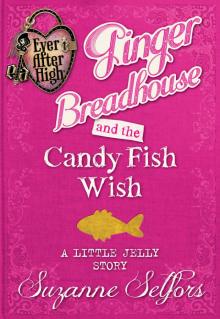 Ginger Breadhouse and the Candy Fish Wish
Ginger Breadhouse and the Candy Fish Wish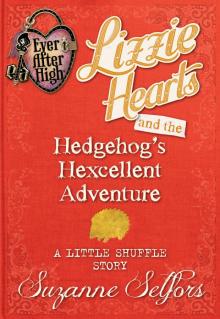 Ever After High: Lizzie Hearts and the Hedgehog’s Hexcellent Adventure: A Little Shuffle Story
Ever After High: Lizzie Hearts and the Hedgehog’s Hexcellent Adventure: A Little Shuffle Story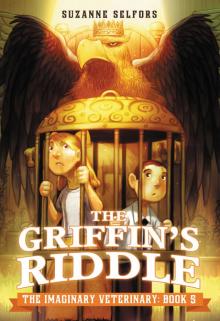 The Griffin's Riddle
The Griffin's Riddle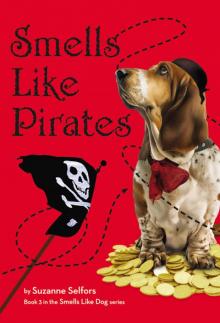 Smells Like Pirates
Smells Like Pirates Duchess Swan and the Next Top Bird
Duchess Swan and the Next Top Bird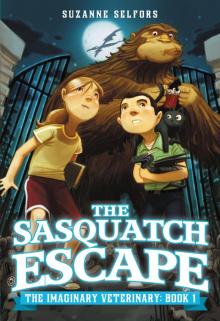 The Sasquatch Escape
The Sasquatch Escape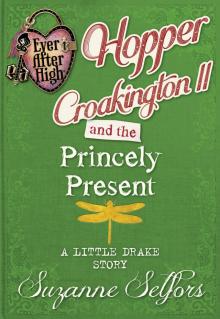 Hopper Croakington II and the Princely Present
Hopper Croakington II and the Princely Present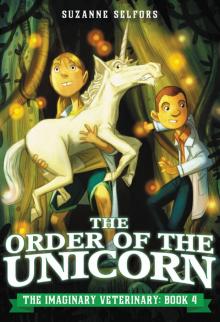 The Order of the Unicorn
The Order of the Unicorn A Semi-Charming Kind of Life
A Semi-Charming Kind of Life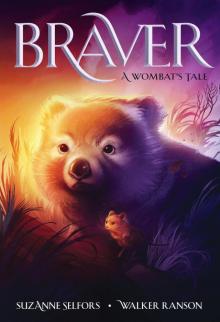 Braver
Braver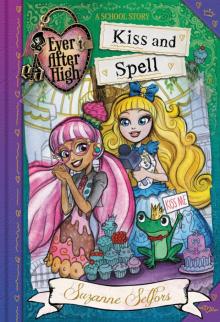 Kiss and Spell
Kiss and Spell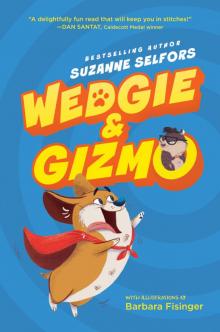 Wedgie & Gizmo
Wedgie & Gizmo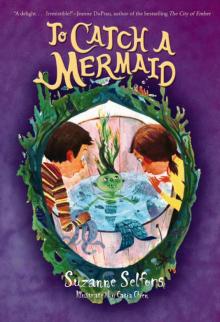 To Catch a Mermaid
To Catch a Mermaid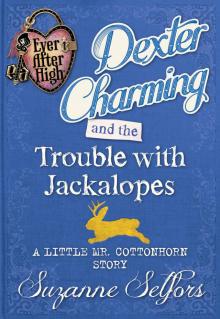 Dexter Charming and the Trouble with Jackalopes
Dexter Charming and the Trouble with Jackalopes The Sweetest Spell
The Sweetest Spell CoffeeHouse Angel
CoffeeHouse Angel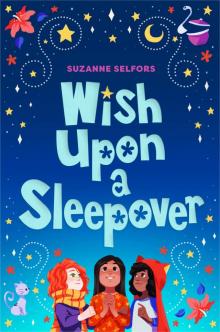 Wish Upon a Sleepover
Wish Upon a Sleepover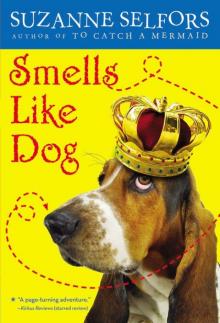 Smells Like Dog
Smells Like Dog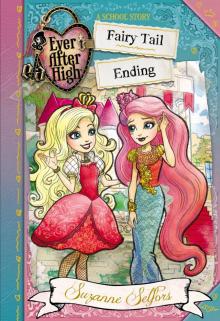 Ever After High
Ever After High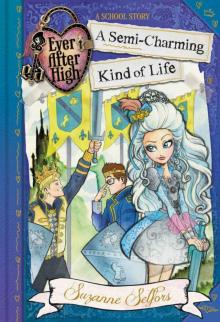 Ever After High: A Semi-Charming Kind of Life
Ever After High: A Semi-Charming Kind of Life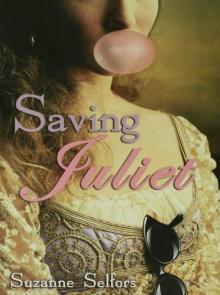 Saving Juliet
Saving Juliet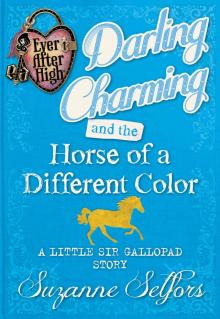 Darling Charming and the Horse of a Different Color
Darling Charming and the Horse of a Different Color Wedgie & Gizmo vs. the Toof
Wedgie & Gizmo vs. the Toof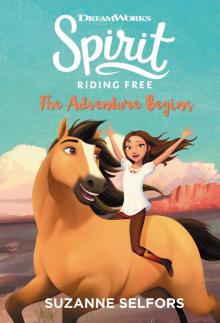 Spirit Riding Free--The Adventure Begins
Spirit Riding Free--The Adventure Begins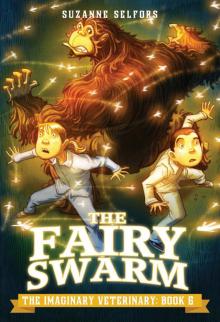 The Fairy Swarm
The Fairy Swarm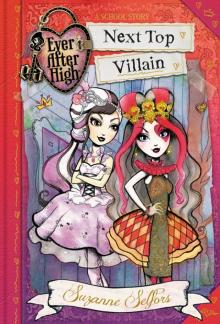 Ever After High: Next Top Villain: A School Story
Ever After High: Next Top Villain: A School Story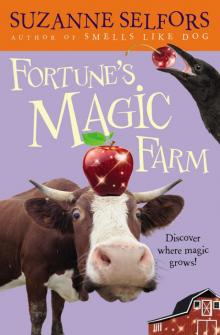 Fortune's Magic Farm
Fortune's Magic Farm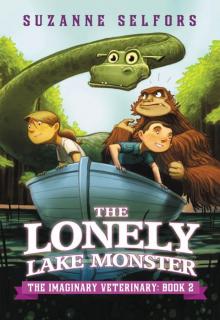 The Lonely Lake Monster
The Lonely Lake Monster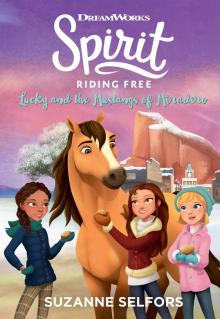 Spirit Riding Free--Lucky and the Mustangs of Miradero
Spirit Riding Free--Lucky and the Mustangs of Miradero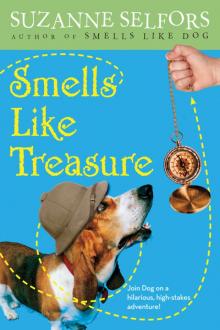 Smells Like Treasure
Smells Like Treasure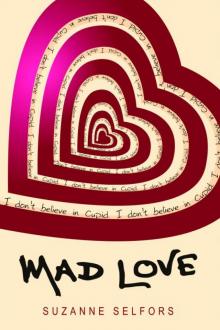 Mad Love
Mad Love